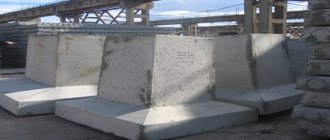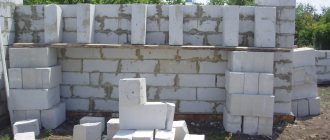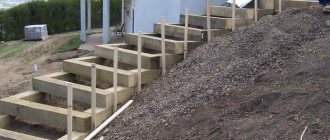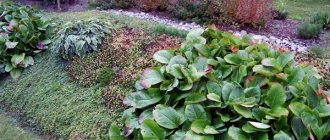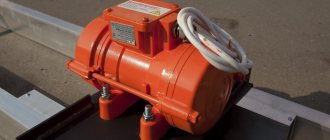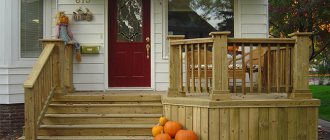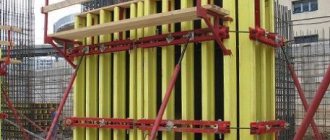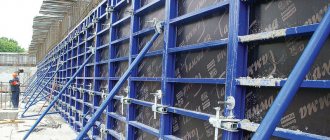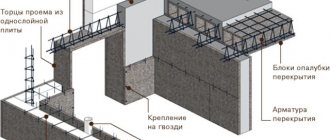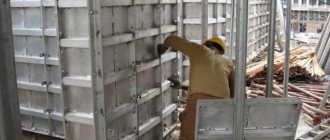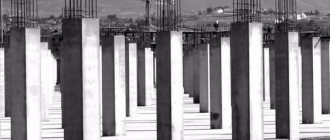Construction Industry Partner
Doka products help builders build buildings and structures faster, better and more reliably. Wall formwork systems for the highest walls are individually adjusted to the building plan, resulting in the desired concrete surface. For heavy or light floors, the company produces systems that can be used once or repeatedly in rooms of any height. The high reliability of the construction process is ensured by support scaffolding and ladders manufactured by Doka. All Doka systems are made only from high-quality materials and raw materials - regardless of whether it is steel, aluminum or a combination of wood and synthetic material.
The flexibility and versatility of the systems make it possible to quickly and efficiently carry out work. The quality of the produced surface, assembly speed and high turnover allow saving time and costs for finishing. In St. Petersburg, Doka's clients include such construction organizations as LEK, LenSpetsSMU, M-Industry, Stroymontazh, BSK.
By material
Wooden formwork has become more widespread due to the speed and ease of installation, as well as because of its low cost. Aluminum and steel formworks are much more expensive than wooden formworks and are used in the construction of large and important structures.
Today, plywood is used to make the surface of wall formwork panels, which is made from materials using modern woodworking technologies.
Also, for the manufacture of formwork, galvanized or galvanized steel with a powder coating is used, which protects the steel from corrosion and ensures quick cleaning of the formwork during operation. One of the positive properties of steel is the fact that, unlike wood, it has a high load-bearing capacity and good resistance to deformation.
Aluminum formwork is much lighter than steel, and thus cheaper to transport and install. However, in terms of strength and yield strength, aluminum is much inferior to steel, and therefore the number of revolutions of aluminum shields is several times less than steel ones. Also, aluminum formwork quickly loses its original geometry and is practically irreparable, which makes its use quite problematic for builders.
Polystyrene is the raw material for the production of permanent formwork. Expanded polystyrene is water- and frost-resistant, is characterized by stable technical characteristics over time and when used in regions with harsh and humid climates, and, in addition, it has high mechanical strength.
New products
Beam Doka H20 Top.
The product is innovative. Terminal reinforcement prevents damage to the ends of the beam, allows for nailing and extends service life by 3 times. Exceptional features: built-in measuring bar (marks every 50 cm); protective coating of the ends of the beam from mechanical, ultraviolet and climatic influences; Possibility of applying customer inscriptions and logos.
A new advanced type of formwork is Framax Xlife frame formwork.
Highly economical wall formwork system due to maximum number of applications. Exceptional features: · the Xlife deck, made using innovative technologies, has a synthetic material coating for a longer service life - up to 200 times of entry; · galvanized high-strength steel frame; · consistent modular grid with a step of 15 cm with 5 elements width parameters; · greater distance between anchors – 1.35 m; · a feature of the plywood coating is the ability to tighten nail holes.
Final work
The final stage in the arrangement of formwork is checking the reliability of fixation of locks and fasteners. In addition, using a level or building level, the horizontal and vertical position of the structure is monitored, as well as the absence of gaps at the joints. All parts must be in close contact and the locking latches must be securely fastened. If the system is erected correctly, after pouring concrete, the sides of the panels do not deform and maintain the required shape.
If wall formwork elements bend, warp or crack, it is necessary to stop pouring concrete. This will prevent further deformation of the shields and their possible collapse. The quality of the design largely depends on the manufacturer. Some companies skimp on the quality of the material, which cannot withstand the specified loads. The second reason for poor-quality installation is violation of work technology.
Devices for moving formwork tables
Electrically driven moving trolley DF.
Economical electro-hydraulic system for moving floor tables at floor level. Exceptional features: · horizontal and vertical movement of tables with an area of 12.5 m2; · allows you to reduce the number of workers when working with tables to one person.
TLS system for lifting Doka tables.
Crane- and weather-independent electromechanical system for moving Doka tables and loads on a construction site. Exceptional features: · movement of loads from a position on the ground to a height of 40 m; · moving cargo from a position on the ceiling to 3 floors; · Increased efficiency thanks to the movement of Dokamatic tables without the use of a crane. Using the Doka table lifting system TLS, Dokamatic tables are moved from one floor to another without the use of a crane. Valuable crane operating time can be used for other work on the construction site, speeding up construction progress.
Self-propelled climbing formwork SKE.
Crane- and weather-independent climbing formwork for structures of any shape and height. Exceptional features: · modular design of the system with wide functionality; · hydraulic movement of the entire modular formwork element without the use of a crane; · maximum safety in all operating phases; · withstands wind loads of up to 200 km/h.
Features of the device and types of structures
Kramos or Doka formwork made using OSB should be easily dismantled immediately after the foundation hardens.
It is worth noting that foundations without formwork can also be erected in a number of cases, but they will not have the necessary strength characteristics.
The formwork for the foundation from the manufacturer Doc, built around the house, can have a two-level tier. It is worth remembering that before making formwork with your own hands, you should take into account such a parameter as the turnover of the formwork.
In order for Doka's monolithic formwork or a similar structure of a similar type to contribute to the formation of a reliable foundation around the house, a special support is used - a strut.
This may be a sliding bar, but in most cases the strut is fixed rigidly and motionlessly. For a more precise location of an element such as a strut, a calculator is used, with which you can calculate the Dock-type formwork.
Such a calculation calculator can easily be found on the Internet; it is presented as a free online service. The calculator, with the assistance of which the calculation is made, only requires entering the necessary data.
How to make the right formwork for the foundation
The presented foundations of the Dock type require the installation of an element such as a strut. A brace can contribute to the integrity of a structure such as a two-level foundation placed around the house being built.
It is worth noting that the mounting strut helps to align and hold in a given position all formwork panels of any type from the manufacturer Doc.
Thus, the entire structure around the house will maintain a high degree of stability. The strut, depending on the number of pipes in its composition, like the foundation, can be single-level or two-level.
A two-level strut of any type can provide a high and reliable degree of fastening of the board in order to create formwork for the foundation.
The presented two-level strut is created using two tubular hoses and is equipped with screw couplings.
Formwork of any type, including Dock, has its own parameters, and the choice of the desired type is determined by such characteristics as configuration, height above ground level and span length.
All these values are calculated using a service called an online calculator. The presented calculation calculator will significantly simplify all installation work associated with the formation of formwork for a house.
Doc's products used in the construction of the foundation of a house have differences due to different degrees of thermal conductivity. They can be:
Formwork design for the foundation
- insulated;
- special;
- warming.
In addition, Doc's products, like the rest, are divided into two main types. This:
- Removable.
- Fixed.
When using permanent formwork made of expanded polystyrene, the level of labor costs is significantly reduced , and the speed of installation of such a structure for a house increases significantly.
Formwork for unique projects
“The main consumers of our products in Russia are companies building housing,” continues Gennady Syromyatnikov.
– Usually they purchase the simplest types of formwork – for walls and ceilings. But we have high hopes for special formwork for projects such as the Burj Dubai high-rise tower. Using approximately the same equipment, it is possible to build reinforced concrete pylons for bridges. That is why we are so interested in the construction of the Western High-Speed Diameter. In our work, we are faced with the problem of copying our products by a local manufacturer. For now, unfortunately, we can't do anything about it. Nevertheless, many construction companies prefer to work with us: they are interested in cooperation with a competent partner who provides quality service. We sell not just pieces of iron and a set of pieces of wood, but a range of services. And even more than the quality of our equipment, we are proud of the quality of our technical support. As practice shows, many builders lack management at the construction site. They are afraid of new equipment, afraid of breaking it or not meeting deadlines. In this case, real assistance will be provided by the service and technical support of our specialist consultants throughout the entire course of concrete work. We are optimistic about the future. For a very long time we existed on the territory of Russia in the form of a representative office. But now a new legal entity has been organized - Russian. We have purchased a plot of land in St. Petersburg for the construction of a product warehouse and hope that it will begin operating at the beginning of 2009, offering equipment sales and rental services. Nadezhda Puptseva
Doka Rus LLC Branch in St. Petersburg St. Petersburg, Stachek Ave., 99 Tel./fax (812) 333-1277 E-mail: www.doka-opalubka.ru
Coordinates in Moscow Russia, 123001, Moscow, Bolshaya Sadovaya st., 8 Tel./fax (495) 650-9922
Sale of high quality formwork
Currently, formwork is often used for monolithic construction. Construction companies give preference to advanced technologies for monolithic construction, and also use only high-quality materials. One of the main materials for monolithic construction is formwork. There are a huge number of types of formwork, and accordingly, the cost of formwork varies widely from low to high. In Russia there are a large number of enterprises engaged in the production and sale of formwork. Only they all differ from each other according to some criteria.
specializes in the following areas of sales: sale of formwork of any type; sale of formwork from warehouse and to order; sale of formwork throughout Russia; sale of formwork with the highest quality; sale of reusable formwork, etc.. Production and sale of formwork is the main direction.
